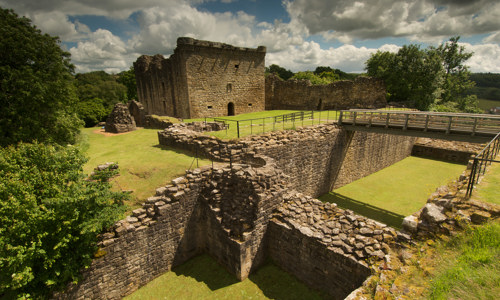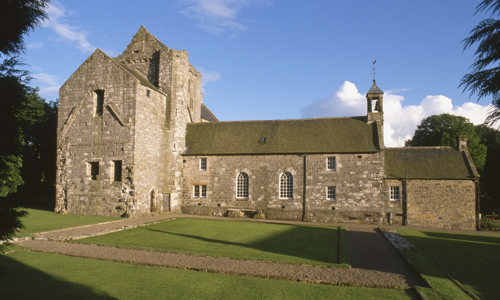History
Romanesque architectural fragments show that St Bride’s Church was built on the site of an earlier building, probably dating to the 1100s. Much of the church we see today was built in the 1300s.
This was the parish church of Douglas. ‘The Good Sir’ James of Douglas was close friends with Robert the Bruce, and is said to have slaughtered English troops inside the church in 1307. Thanks to James’s alignment with Bruce, the Black Douglases rose to become one of Scotland’s most powerful noble families of the day.
The Douglas mausoleum
When Sir James died in 1330, his son Archibald ‘The Grim’, 3rd earl of Douglas, modified the church to accommodate his tomb.
Sir James’ tomb is the first of three elaborate canopied tombs to be found in the church. Its effigy depicts a knight drawing a sword, with his head on a pillow and his feet resting on an animal.
The second tomb belongs to Archibald, 5th earl and 2nd Duke of Touraine, who died in 1439. He’s depicted wearing robes of state and a ducal coronet on his head, and his feet rest on a lion. The tomb chest below has carved figures, probably representing his family.
The third tomb is that of James ‘the Gross’, 7th Earl, who died in 1443, and his wife Beatrice Sinclair, who died at some point before 1463. This is a rare double effigy, with the earl in armour and his wife in a flowing robe. Both have their hands clasped in prayer.
Overthrow of the Douglases
James II overthrew the Black Douglases in 1455, and St Bride’s soon fell into neglect.
A clock tower, containing a clock dated 1565, was added to the nave’s south aisle. The clock is said to have been presented by Mary Queen of Scots. It’s probably the oldest working clock in Scotland.
Worship in the chancel continued until 1781, when a new church was built on a different site.
Charles, 12th earl of Home, re-roofed and re-glazed the chancel in 1881, to provide a suitable shrine for his mother, Lady Lucy Montagu Douglas. Her tomb now takes centre stage in the chancel.














